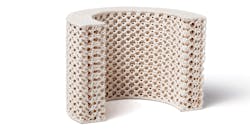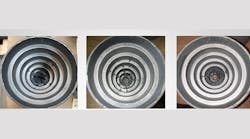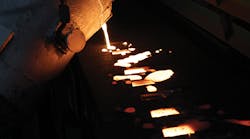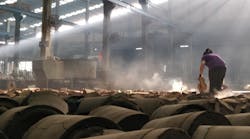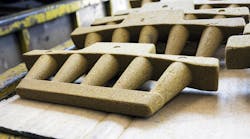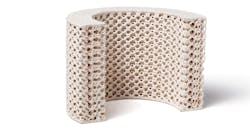Q: I understand that shell molding offers better dimensional accuracy than cold-box processes, as well as higher productivity rates and lower labor requirements. Is that accurate? Considering the influence of global production costs on domestic metalcasting operations, how can we identify the value of shell molding?
A: In recent years, global competitive pressure and demanding economic conditions have compelled metalcasters to refine their production processes and develop new technologies that improve productivity and profitability, and reduce costs. Thus, making rapid advances in core design, production and binder technology is an ongoing task that must not only meet foundry customers’ needs but must also be environmentally acceptable.
It’s true that the shell process offers the potential for excellent core surface and good dimensional accuracy in casting due to its rigidity. Its high-volume production rates and the possibility to semi-automate the process has interested foundry workers around the globe. But at the same time, the need for a heated metal tool (450°F-650°F) using natural gas or bottled gas for the heating, has impacted productivity and cost. The phenol formaldehyde thermosetting resins needed have raised environmental concerns not only due to the high resin levels needed for the process (2%- 5%), but to the HAPs (hazardous air pollutants) characteristic of phenol and formaldehyde solvents.
The phenolic urethane cold-box (PUCB) binders were introduced in the late 1960s. Since that time, significant investments have been made to convert many shell, hot box, and sodium-silicate bonded coremaking operations to the PUCB process. In addition to other factors, these efforts sought economic advantages from high production rates and reduced cost per unit produced.
From the 1980s up to now, the growth of the cold-box processes has been impressive. Not only have new processes been introduced and improvements made in the PUCB system, but equipment manufacturers also introduced appropriate gas generation, coremaking, and scrubbing equipment that reduce the raw material consumption, and also allow recycling of some of the consumables (amines).
Today, there is a large amount of work going on in developing new binder technology, not only to improve the performance of the binder but to make it more environmentally friendly. The trend still shows the cold-box process replacing the shell process. It's overwhelming advantage of "no heat" required and the curing obtained simply by passing an amine catalyst through the cavity allows the core box to be constructed from wood or plastic, or metal for high production cores, not only creating an environmentally friendly work space but at the same time improving a foundry’s bottom line by reducing tooling costs.
Several cold-box processes exist, including phenolic urethane/amine, furan/SO2, acrylic/SO2, and sodium silicate/SO2. In general, these processes offer:
1) Good dimensional accuracy;
2) Excellent surface finish;
3) Excellent characteristics for high-production due to its short cycle times allowing for higher production rates; and
4) Good core and mold shelf life.
In addition to saving heat energy and promoting high productivity, this process reduces gas evolution, and emissions during sand mixing, coremaking and core storage can be reduced, as well as the emissions during pouring, cooling, and shakeout.
Other developments for the environmental characteristics of the sand treatment process include "biodiesel" and "aromatic" solvents for lower VOC emissions during coremaking. and lower HAP emissions at pouring, cooling and shakeout.
The curing process involves no flammable components. A new catalyst, DMPA, has been introduced that has a higher reactivity than TEA. The high reactivity reduces catalyst consumption, results in faster curing, and improves the work place because it reduces the odor generated during sand treatment.
In addition to the advances in cold-box sand chemistry and sand processing equipment, there has been progress in simulation tools for cold-box coremaking. The Arena-flow software launched in 2001, assists designers in finalizing the core geometry and multiple cavity core boxes, blow tube selection and location, vent selection and location, and other aspects of tooling design. This powerful technology allows for more complicated and accurate core and mold production than was possible previously, while at the same time improving core quality and cycle times, and improving process productivity by reducing pattern shop “send backs”.
Binders are rapidly evolving to minimize casting defects, minimize emissions, and produce smooth cast surfaces.
Join the Conversation. Email Your Questions for ASK Chemicals
Share your insights, opinions, and elaborate on the questions and the experts' answer(s). You must be logged in to the website in order to post your comments.
